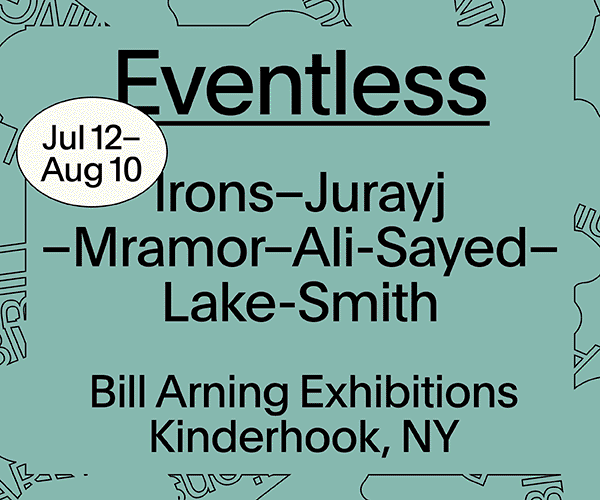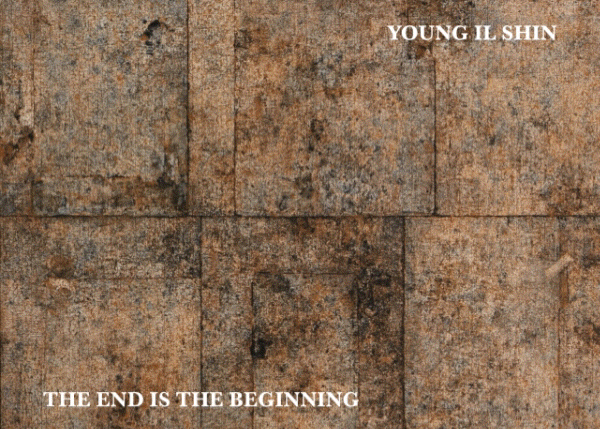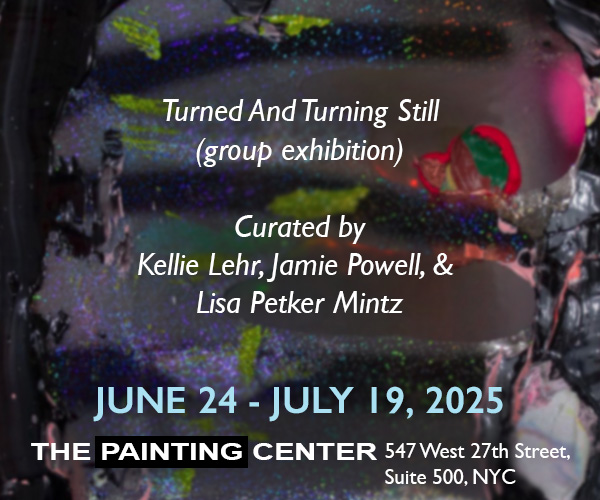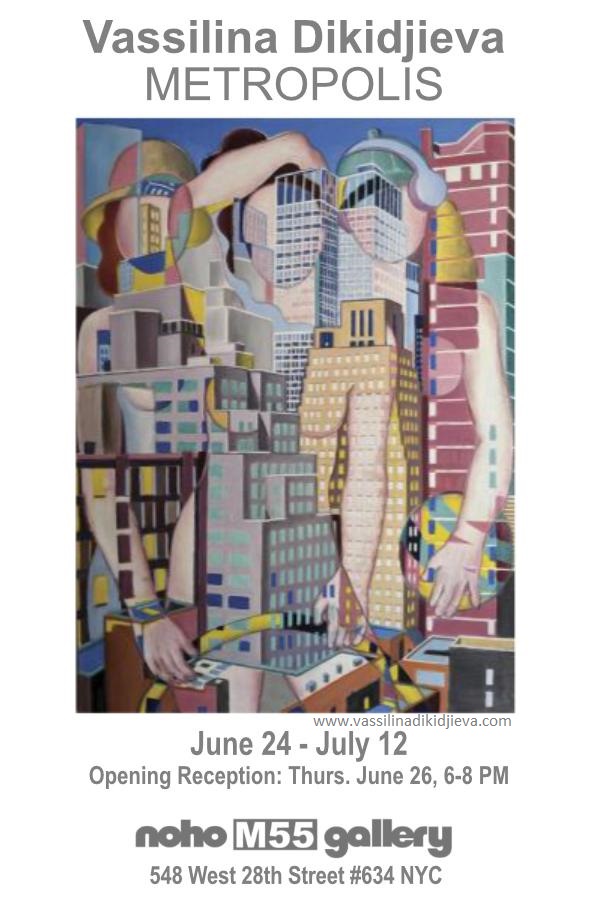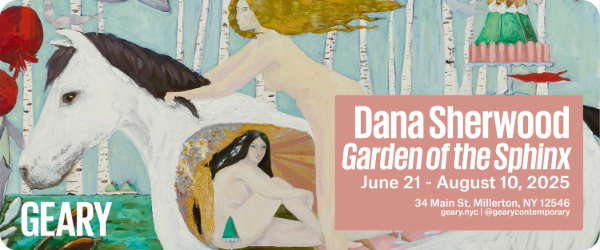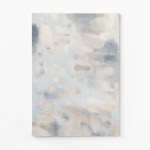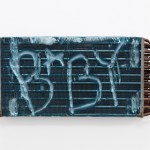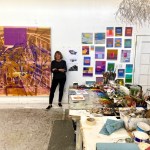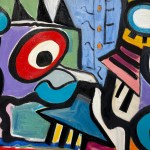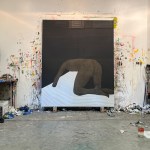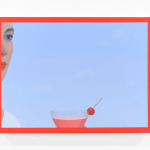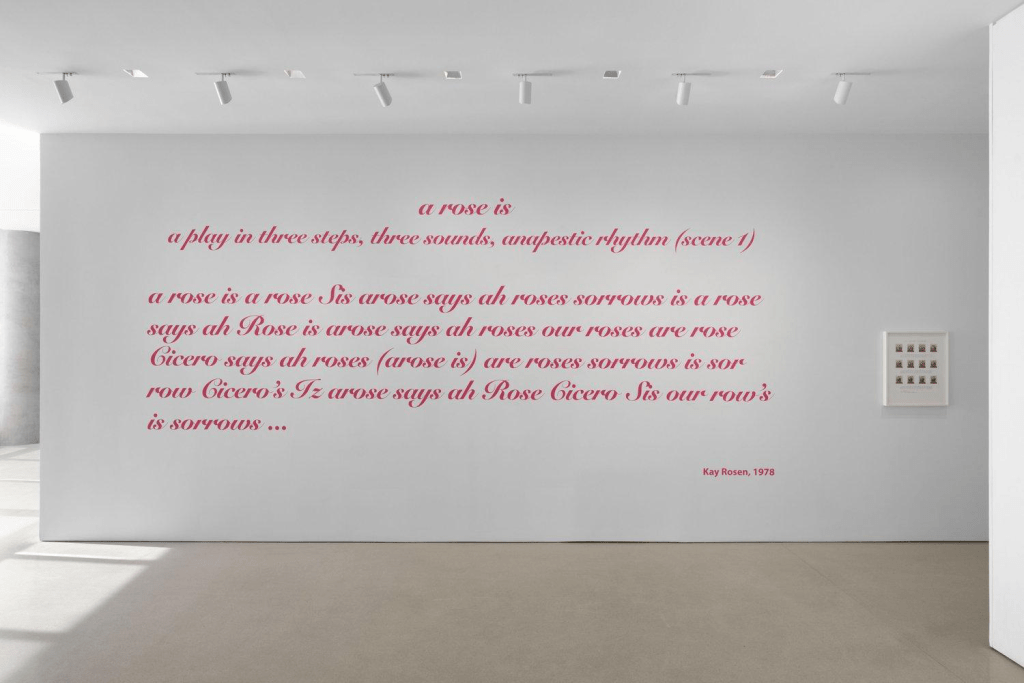
Contributed by Almog Cohen-Kashi / A rose has never had a fixed meaning. This simple flower swings between adoration and destruction, purity and rot, natural beauty and artificial symbolism. Seamlessly interlacing art history and literature, “A Rose Is” at the FLAG Art Foundation brings together 39 artists of varying generations and backgrounds for a poetic exploration of how society views an idealized plant to project shifting attitudes towards love, romance, commercialism, commemoration, and decay in an elegantly curated exhibition.
The elevator doors open, revealing the vinyl matte, fuchsia words of Kay Rosen’s A Rose is: a play in three steps, three sounds, anapestic rhythm (scene 1), letter by letter. This installation, produced in 2025, adapts the first three lines of Rosen’s 1978 text-image composition A Rose Is, which is displayed beside it. Each word in Rosen’s installation builds on the last, creating a rhythmic and visual experience by using anapestic meter, a three-syllable pattern involving two unstressed syllables followed by a stressed one. Da-da-DUM. It establishes a bouncy, lighthearted sense of momentum. Reading Rosen’s work aloud, I hear my r roll into an o, then slide towards s, before ending at e. But as soon as I reach the middle of the first line, my words begin to slur together, and the word rose slowly loses its shape.
Rosen remodels the word rose, moving or adding letters to maintain a distinct lyrical quality in her work. A rose becomes “arose,” “sorrows,” “Ciceros,” and “Sis our row’s.” However, by always stressing the sound “ose,” readers still know this rose is a rose. The subtle phonetic slippage caused by intentionally manipulating words to create a rhythmic effect – known as metaplasm – lays the groundwork for the conversations among the artworks. While the image or idea of roses pervades the exhibition, each artist articulates a different message.
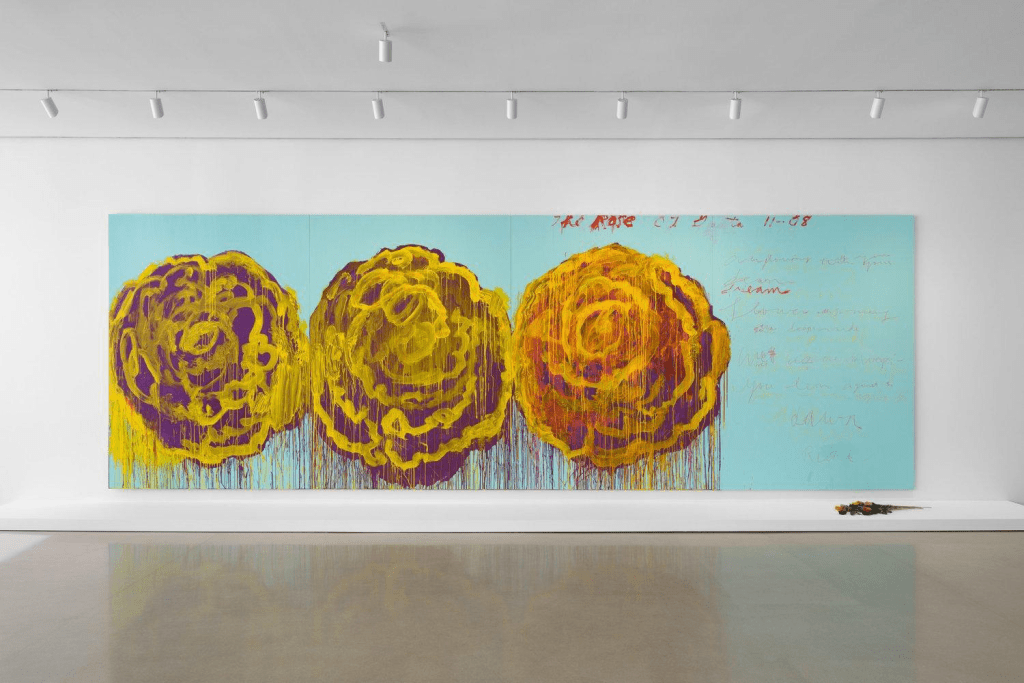
Past the wall where Rosen’s words are installed, Cy Twombly’s monumental four-panel abstract expressionist painting The Roses III packs a formidable emotional charge. Twombly’s garden consists of three roses that are simultaneously blooming and withering. Excess yellow paint bleeds down the canvas over gestural washes of burgundy to create depth and a feeling of delicate intensity. The final panel presents eight lines of Rainer Maria Rilke’s poem The Roses frenetically scribbled, rendering the poet’s succinct fragment on the fleeting yet enduring nature of beauty into a visual and conceptual element. These words are faint, like an elusive whisper written once in red and echoed in yellow.
Lying low on a plinth directly under Rilke’s words are Alex Da Corte’s rubber-dipped silk rainbow roses, Free Roses. The sculpture is fixed and resistant to decay, memorializing the decomposing roses in Twombly’s painting. While the two pieces complement each other in terms of time, memory, and grief, they diverge in how they deal with duration and materiality.
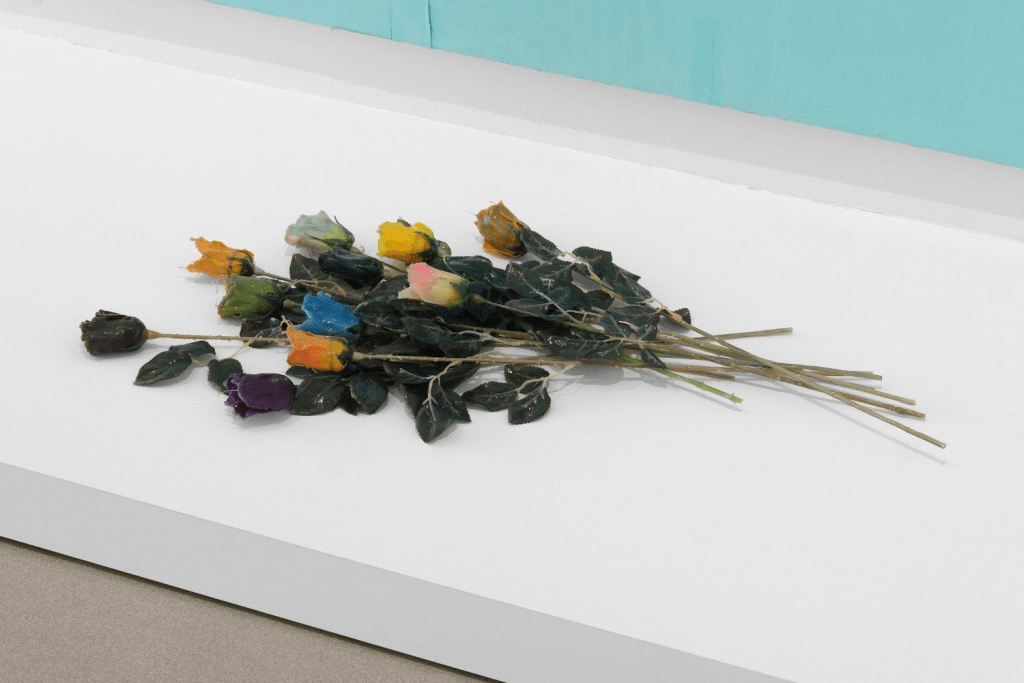
Upstairs, in a black-box gallery, is Candy Darling on Her Deathbed, Peter Hujar’s 1973 black-and-white gelatin silver print of Candy Darling, at its center. She is encircled by flowers in both the image and the gallery. The sound of Rose Gold, Sara Cwynar’s 2017 film, lures viewers to the other side of the wall. “They invented this color, rose gold,” Cwynar says in the film, “and I’m mesmerized. A new object of desire.” She then sets out to discover the meaning of a color that was widely commercialized in the mid-2010s.
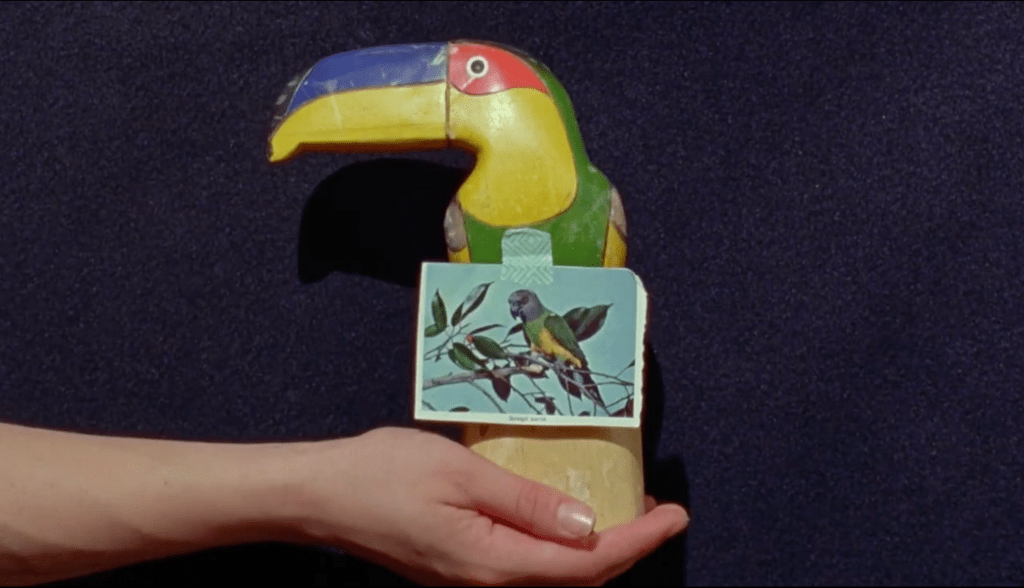
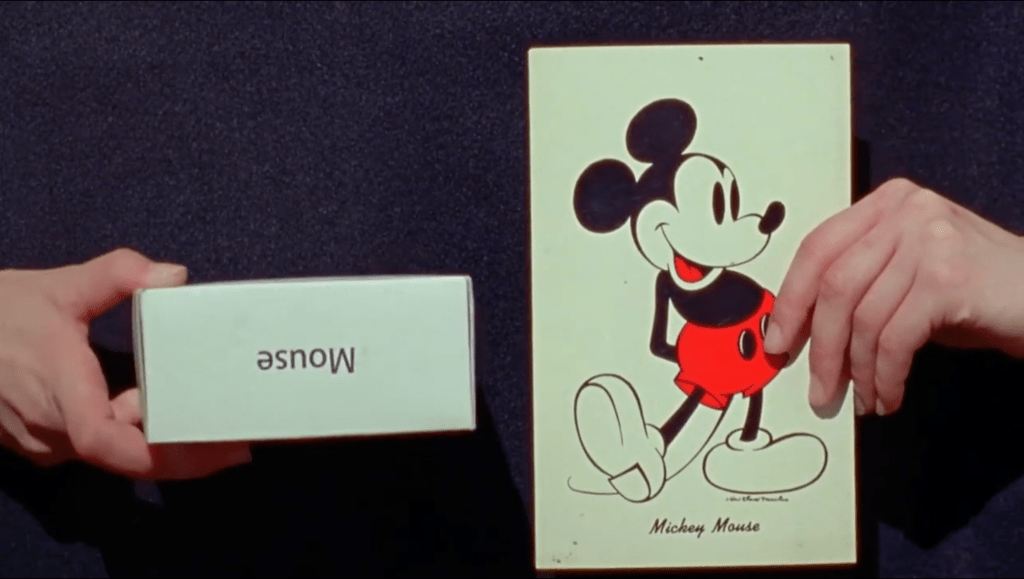
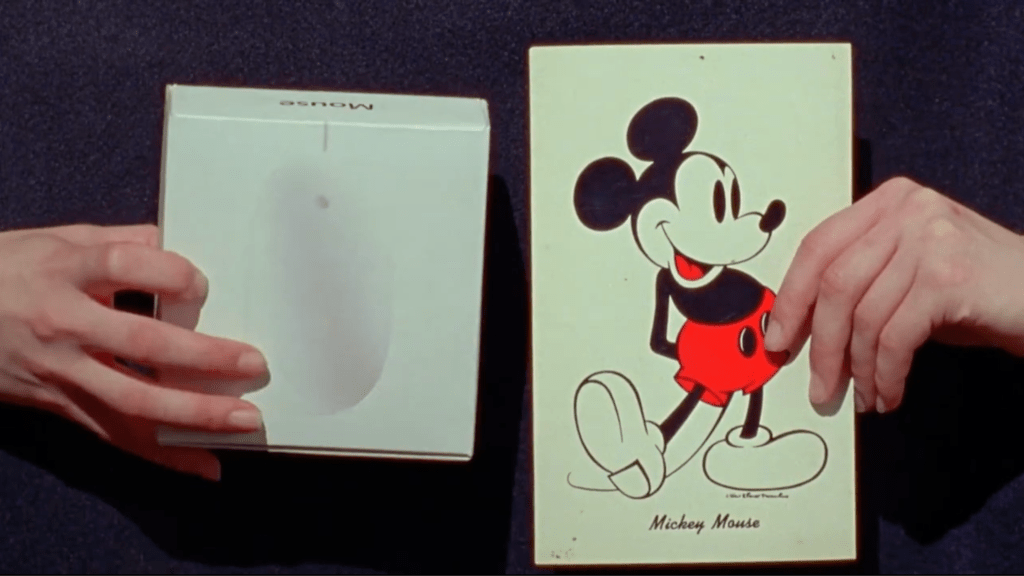

Stills from Sara Cwynar Rose Gold, 2017, 16 mm film transferred to video, 8 minutes
On this journey, she plays a little linguistic game with her audience. A hand stretches out from the left side of the frame, presenting a statue of a toucan with a photograph of a bird taped to its green chest. A voice announces the two representations of a bird, stating: “This is a bird and this is a bird.” A computer mouse and a Mickey Mouse enter the frame, followed by a plastic tree and a palm, before Cwynar ends this sequence by saying, “This is rose, and this is gold. What do words have to do with anything?” Rose Gold, like this show overall, is about how meaning is made as opposed to what something means. Without signs, symbols, and language, colors, animals, trees, and even roses swim in conceptual fluidity because they mean something different to everyone.
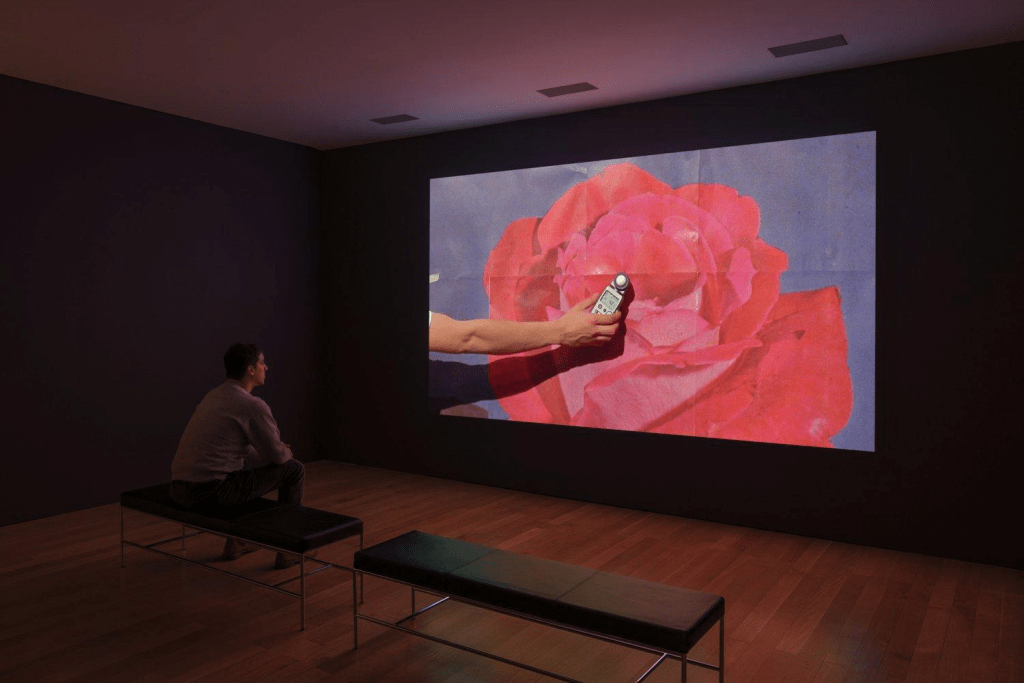
A rose is both a physical form that can be touched, felt, and smelled, and an imagined ideal. Its meaning is in a constant state of flux, constructed through various projected associations. A rose can be an admired muse or a compelling enigma. After obsessively trying to make sense of the color “rose gold,” Cwynar comes to the realization that, much like a rose itself, “rose gold doesn’t need to be anything at all – just an idea.”
“A Rose Is,” The FLAG Art Foundation, 545 West 25th Street, 9th Floor, New York, NY. Through June 21, 2025. Artists include: Farah Al Qasimi, Polly Apfelbaum, Arakawa, Genesis Belanger, Louise Bourgeois, Joe Brainard, James Lee Byars, Pier Paolo Calzolari, Ann Craven, Sara Cwynar, Alex Da Corte, Jay DeFeo, Ethyl Eichelberger, Awol Erizku, Cerith Wyn Evans, Tony Feher, Allison Janae Hamilton, Gabriella Hirst, Peter Hujar, John Jarboe, Anna Jermolaewa, Sarah Jones, Anselm Kiefer, Lee Krasner, Dr. Lakra, Linder, George Platt Lynes, Robert Mapplethorpe, Katie Paterson, Nicolas Party, Kay Rosen, James Rosenquist, Taryn Simon, Charles Sheeler, Kiki Smith, Haim Steinbach, Cy Twombly, Andy Warhol, among others.
About the author: Almog Cohen-Kashi is pursuing a Ph.D. in art history at SUNY at Stony Brook, focusing on modern and contemporary sculpture.

